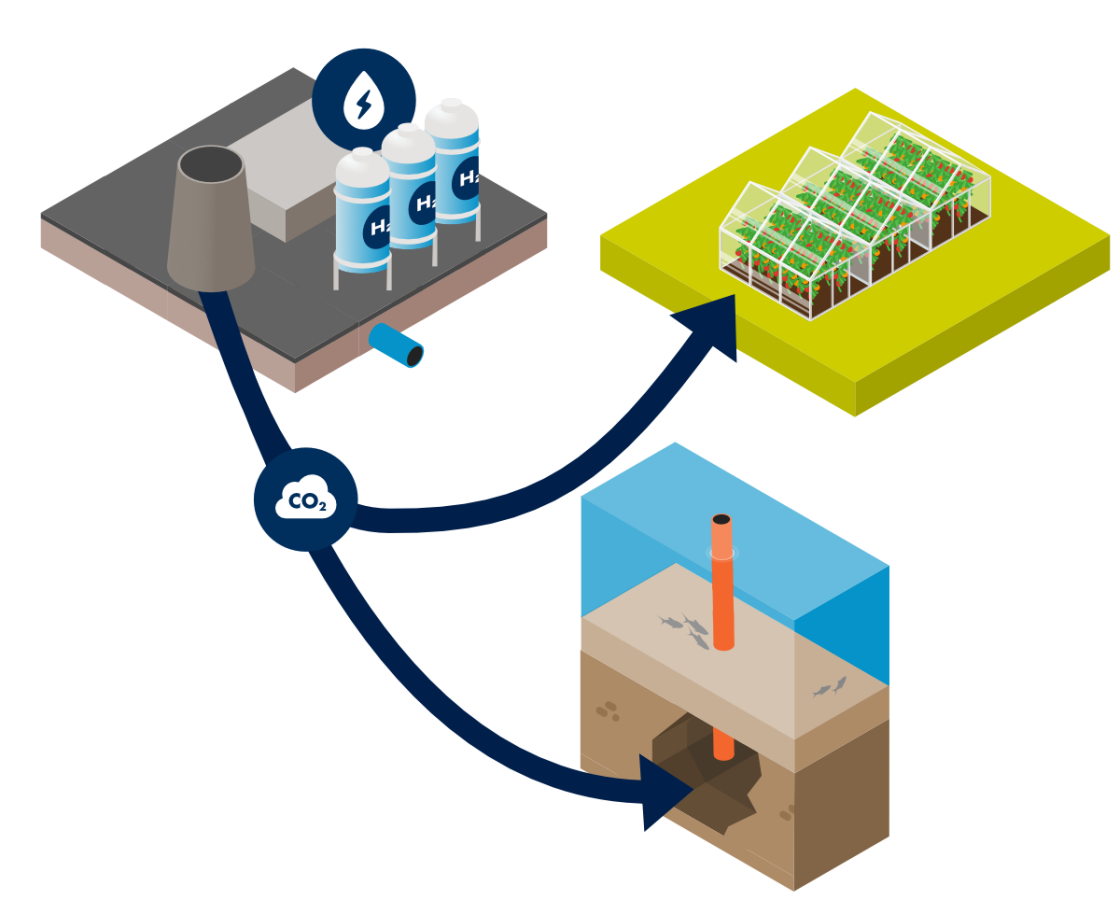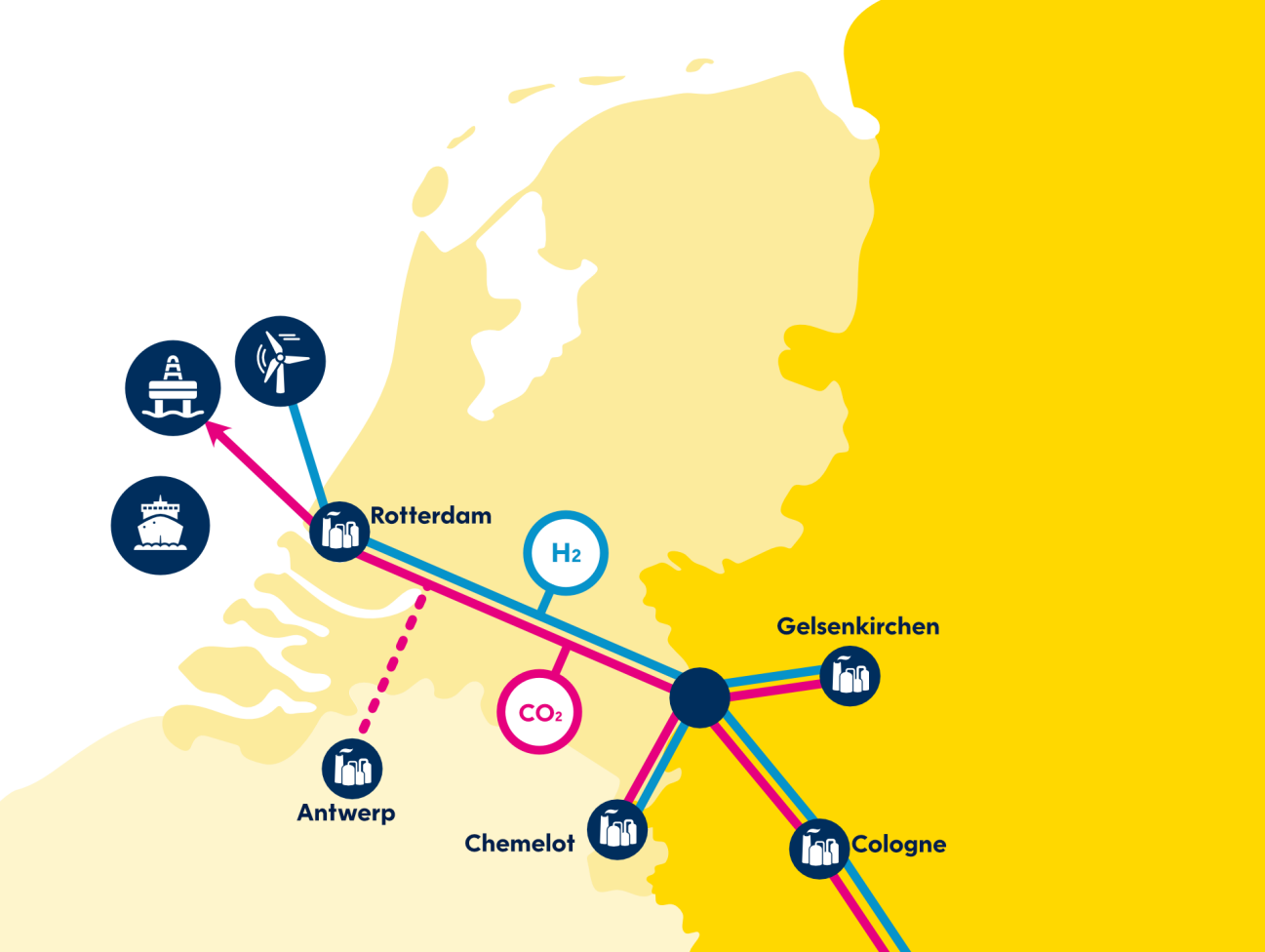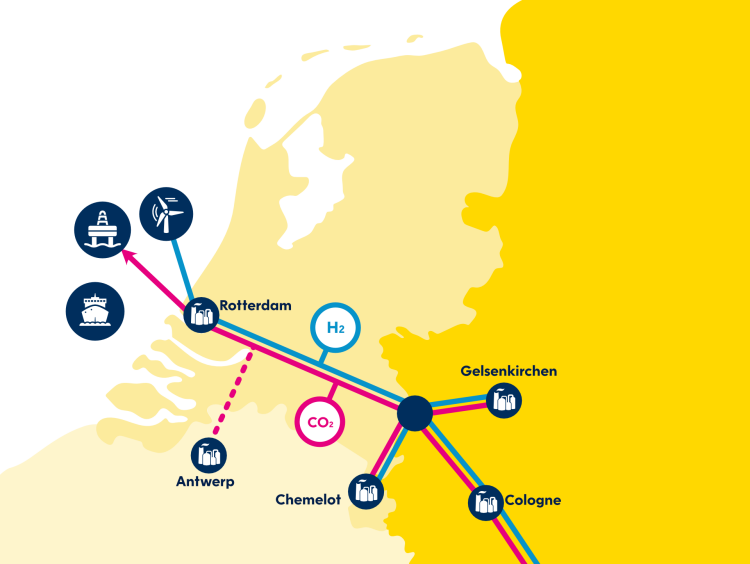
HYDROGEN ECOSYSTEM
IN ROTTERDAM

Green hydrogen

Blue hydrogen


Hydrogen is already used to make fossil fuels cleaner, and it will play a bigger role in the future as a fuel for heavy industry, such as steel production, and as a raw material in the chemicals industry. We'll see hydrogen appearing more frequently in mobility too. There are already hydrogen-powered cars and buses and the first hydrogen-powered inland vessel already exists!
The demand for hydrogen in Northwestern Europe will be so great, that in this part of Europe, we will simply be unable to generate enough green energy to produce it. That's why we're committing to the import of hydrogen.
Importing hydrogen
Delta Rhine Corridor
Minister Jetten
for Climate and Energy Policy
'I support the approach and speed that this organisation is aiming for.'
One example of a pipeline for transporting hydrogen is the Delta Rhine Corridor. The Port of Rotterdam Authority is one of the initiators. Together with government and industry partners, we are working on a project to realise a number of pipelines for hydrogen and other forms of energy. The intention is to have the pipelines run to Chemelot in Limburg, and the Ruhr area and Ludwigshafen in Germany.

Storing and transporting hydrogen
There are various forms in which hydrogen can be stored and transported. At present, it looks like ammonia (a compound of hydrogen and nitrogen) will be used most frequently as an energy carrier. The industry has experience in this and the necessary infrastructure is already in place. Transport of liquid hydrogen and its carrier is also expected to take place more often. The first initiatives for realising this are already present. In the future, hydrogen will be stored and transported in a number of forms. Which form is chosen will depend on multiple factors, such as the available infrastructure, the distance to be travelled, the volume of hydrogen being transported and how the hydrogen is to be used.
This is an interim stage, on the way to making large amounts of green hydrogen.
Europe's largest hydrogen factory is currently being built on the Maasvlakte 2. It's called Holland Hydrogen I and is expected to be operational in 2025. The renewable energy used for this comes from offshore wind farm Hollandse Kust, among others.
At present, mainly ‘grey’ hydrogen is produced and used in the Netherlands. That means that CO₂ is released in the production of hydrogen, because fossil fuels are used to produce it. Our goal is to produce ‘blue’ hydrogen and ultimately, only ‘green’ hydrogen.
With blue hydrogen, emissions are stored by way of an underground pipeline in empty gas fields under the North Sea, as earlier described in the Porthos project.
Production of hydrogen
Let's go back to the beginning. What was hydrogen again? Contrary to the earlier mentioned energy source: wind, hydrogen is not an energy source. Hydrogen does not occur of its own accord. You have to produce it, and that takes energy – wind or solar power, for example. Once hydrogen has been produced, and it is subsequently combusted, the reaction with oxygen releases energy.
Hydrogen plays a major role in a future without emissions. At least it will, as long as we keep a holistic view. Because if we take a sustainable approach to the production, the import, the transport to hinterland destinations and the use of hydrogen – it will make a real difference.
Grey hydrogen
What is hydrogen used for?
What is hydrogen?
Production, import, use and transport of hydrogen
HYDROGEN ECOSYSTEM
IN ROTTERDAM

'I support the approach and speed that this organisation is aiming for.'
Minister Jetten
for Climate and Energy Policy

Delta Rhine Corridor
One example of a pipeline for transporting hydrogen is the Delta Rhine Corridor. The Port of Rotterdam Authority is one of the initiators. Together with government and industry partners, we are working on a project to realise a number of pipelines for hydrogen and other forms of energy. The intention is to have the pipelines run to Chemelot in Limburg, and the Ruhr area and Ludwigshafen in Germany.
There are various forms in which hydrogen can be stored and transported. At present, it looks like ammonia (a compound of hydrogen and nitrogen) will be used most frequently as an energy carrier. The industry has experience in this and the necessary infrastructure is already in place. Transport of liquid hydrogen and its carrier is also expected to take place more often. The first initiatives for realising this are already present. In the future, hydrogen will be stored and transported in a number of forms. Which form is chosen will depend on multiple factors, such as the available infrastructure, the distance to be travelled, the volume of hydrogen being transported and how the hydrogen is to be used.

Storing and transporting hydrogen
The demand for hydrogen in Northwestern Europe will be so great, that in this part of Europe, we will simply be unable to generate enough green energy to produce it. That's why we're committing to the import of hydrogen.
Importing hydrogen
Green
hydrogen

Grey hydrogen
Blue
hydrogen


Europe's largest hydrogen
factory is currently being built on
the Maasvlakte 2. It's called Holland Hydrogen I and is expected to be operational in 2025. The renewable energy used for this comes from offshore wind farm Hollandse Kust, among others.
This is an interim stage, on the way to making large amounts of green hydrogen.
At present, mainly ‘grey’ hydrogen is produced and used in the Netherlands. That means that CO₂ is released in the production of hydrogen, because fossil fuels are used to produce it. Our goal is to produce ‘blue’ hydrogen and ultimately, only ‘green’ hydrogen.
With blue hydrogen, emissions are stored by way of an underground pipeline in empty gas fields under the North Sea, as earlier described in the Porthos project.
Production of hydrogen
Hydrogen is already used to make fossil fuels cleaner, and it will play a bigger role in the future as a fuel for heavy industry, such as steel production, and as a raw material in the chemicals industry. We'll see hydrogen appearing more frequently in mobility too. There are already hydrogen-powered cars and buses and the first hydrogen-powered inland vessel already exists!
What is hydrogen used for?
Let's go back to the beginning. What was hydrogen again? Contrary to the earlier mentioned energy source: wind, hydrogen is not an energy source. Hydrogen does not occur of its own accord. You have to produce it, and that takes energy – wind or solar power, for example. Once hydrogen has been produced, and it is subsequently combusted, the reaction with oxygen releases energy.
What is hydrogen?
Hydrogen plays a major role in a future without emissions. At least it will, as long as we keep a holistic view. Because if we take a sustainable approach to the production, the import, the transport to hinterland destinations and the use of hydrogen – it will make a real difference.